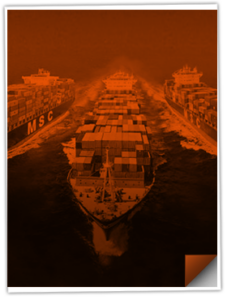Understanding PGAs and Their Role in International Shipping
First things first, what exactly are Partner Government Agencies (PGAs)? Simply put, PGAs are government bodies that regulate specific areas of import and export. They’re crucial in ensuring that goods entering or leaving a country meet all the necessary legal and safety requirements. Think of them as the gatekeepers of international trade.
To effectively collaborate with PGAs, it’s essential to know which agencies are commonly involved in international shipping. Here are some of the key PGAs you may encounter:
- Customs and Border Protection (CBP): This agency is responsible for regulating and facilitating international trade, collecting import duties, and enforcing U.S. trade laws.
- Food and Drug Administration (FDA): The FDA oversees the importation of food, drugs, and medical devices, ensuring they meet safety and health standards.
- Department of Agriculture (USDA): The USDA regulates the import of agricultural products, ensuring they comply with health and safety regulations.
- Environmental Protection Agency (EPA): The EPA enforces regulations related to environmental protection, including the import of chemicals and hazardous materials.
- Bureau of Industry and Security (BIS): This agency manages export controls and ensures compliance with U.S. national security and foreign policy objectives.
- National Oceanic and Atmospheric Administration (NOAA): NOAA regulates the import of marine products and ensures compliance with environmental laws.
The Importance of Customs Clearance
Customs clearance is one of the main areas where PGAs come into play. It’s the process of getting goods through customs authorities to enter or leave a country. Without it, shipments can face delays, fines, or even seizure. So, understanding customs regulations and working closely with PGAs is essential.
How PGAs Affect Import Regulations
Import regulations can be a maze of rules and paperwork. PGAs help navigate this maze by enforcing laws related to health, safety, and environmental standards. Depending on the type of goods, different PGAs might be involved. For instance, importing food products might require approval from both the customs authority and a food safety agency.
Building Strong Relationships with PGAs
Alright, now that we’ve covered the basics, let’s talk about building strong relationships with PGAs. Here are some tips to help you get on the right track.
Communication is Key
Good communication is the foundation of any successful relationship, and it’s no different when dealing with PGAs. Keep the lines of communication open and be proactive in reaching out to the relevant agencies. Whether it’s a quick phone call or an email, staying in touch can prevent misunderstandings and ensure a smooth process.
Stay Informed About Regulations
Regulations can change frequently, and staying informed is crucial. Subscribe to updates from PGAs and industry newsletters to keep up with the latest developments. This way, you can anticipate changes and adjust your shipping strategies accordingly.
Leverage Technology
Technology can be your best friend when it comes to collaborating with PGAs. Many agencies offer online portals where you can submit documents, track shipments, and get real-time updates. Take advantage of these tools to streamline your processes and reduce the chances of errors.
Navigating Geopolitical Factors
Now, let’s shift gears and talk about the bigger picture—geopolitical factors. These can have a massive impact on international shipping, from tariffs and trade wars to political instability. Here’s how to navigate these complexities.
Monitor Global Events
Keep an eye on global events that could affect trade, like elections, policy changes, or international agreements. Being aware of these events will help you anticipate potential disruptions and adjust your shipping plans.
Diversify Your Supply Chain
Relying too heavily on one region or market can be risky. Diversifying your supply chain can mitigate the impact of geopolitical issues. Consider sourcing materials from different countries and having alternative shipping routes in place.
Build a Network of Trusted Partners
Having a network of trusted partners around the world can be invaluable. They can provide local insights and help navigate regional challenges. Whether it’s a freight forwarder, customs broker, or logistics provider, having reliable partners can make all the difference.
Forecasting Future Trends in International Shipping
Now that you’re equipped to handle PGAs and geopolitical factors, let’s look at the future of international shipping. Here are some trends to watch out for.
The Rise of Digitalization
Digitalization is transforming the shipping industry. From blockchain technology to AI-driven logistics, the future is digital. Embracing these technologies can improve efficiency and reduce costs.
Sustainability and Green Shipping
Environmental concerns are becoming increasingly important in global trade. Expect to see more regulations focused on reducing emissions and promoting sustainable practices. Being proactive in adopting green initiatives can give you a competitive edge.
Increased Focus on Security
With cyber threats on the rise, security will continue to be a top priority. Investing in robust cybersecurity measures and staying compliant with international security standards will be crucial for protecting your operations.



